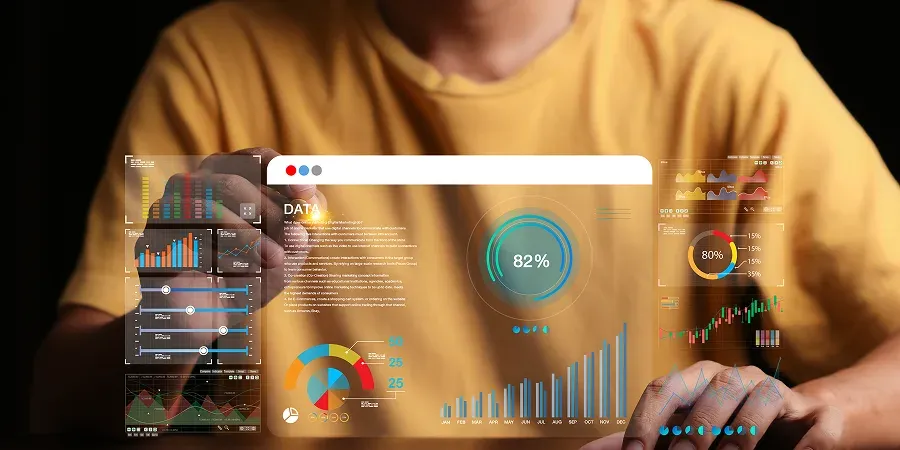Working Hours:
Mon - Fri 9 am - 5 pm PST
Got a question? Just call us at
Designing Websites for Conversion: Tips for Increasing Your ROI
You might have brought traffic to your website, but that is only half the battle. The real challenge lies in turning that traffic into meaningful business results.
A visually appealing site is important, but if it isn't converting visitors into customers, subscribers, or leads, it is not contributing to your bottom line. That is where the concept of return on investment (ROI) comes in. Your website should not just exist, it should perform.
To improve that performance, you need to focus on more than just aesthetics. This is where Conversion Rate Optimization (CRO) comes into play. While ROI measures the value you get from your efforts, Conversion Rate Optimization is the process that helps you increase that value by turning more visitors into actions that matter.
What is Conversion Rate Optimization (CRO) & Why Does it Matter?
A conversion happens when a website visitor completes a desired action. This could be making a purchase, signing up for a newsletter, downloading a resource, filling out a contact form, or even clicking a specific link. These actions are critical touchpoints in the customer journey, and they directly impact your business goals.
Conversion Rate Optimization (CRO) is the process of improving your website to increase the percentage of users who take these desired actions. Rather than focusing solely on driving more traffic, CRO is about getting more value out of the traffic you already have. It is an ongoing process of analyzing user behavior, identifying friction points, and testing changes to improve performance.

What is Conversion-Focused Web Design?
At the heart of Conversion Rate Optimization (CRO) lies Conversion-Focused Web Design. It is a design approach that goes beyond just looking good. It involves creating a user experience that guides visitors naturally toward conversion. This includes clear navigation, intuitive layouts, persuasive messaging, and strong visual hierarchy.
Everything from the placement of Call-to-Action (CTA) buttons to the page's load speed can influence a user's decision to stay, engage, or bounce. Often, small tweaks and landing page optimization can lead to measurable improvements in conversion rates.
6 Practical Website Design Tips to Increase ROI
If you are wondering where to start, here are a bunch of things to begin with:
Understand Your Audience with User Behavior Analytics
You are designing the website for users. So, start by understanding how visitors actually use it. User behavior analytics tools like heatmaps, session recordings, and behavior flow offer powerful insights into real user interactions.
Heatmaps reveal where users click, scroll, or completely ignore, allowing you to identify dead zones or distractions. Session recordings let you watch real-time user journeys and highlight pain points or confusing navigation elements. Behavior flow charts visualize the paths users take through your site and help you pinpoint where they drop off or lose interest.
For example, if analytics show users consistently skip over your call-to-action (CTA) button, it may be poorly placed or lack clarity. Such insights allow you to make informed design changes that enhance usability, increase engagement, and ultimately boost your conversion rate.
Landing Page Optimization
Landing pages are the first impression users will have of your website. A well-optimized landing page reduces bounce rates, increases conversions, and directly contributes to a higher return on your marketing investment.
Firstly, each landing page must be tightly aligned with its traffic source. It does not matter if users arrive via search ads, social media, or email campaigns. Your landing page's content should match their intent. Each one of its elements should serve a purpose. Avoid unnecessary distractions or links that lead visitors away from the goal.
Start with a strong value proposition that immediately communicates what's in it for them. Pair it with a clear, benefit-driven headline that grabs attention. Use a visual hierarchy to guide the eye. Bold headers, contrasting CTA buttons, and strategic use of whitespace make the page easy to scan and act upon.
Strategic Placement of Call-to-Actions (CTA)
The thing about effective CTAs is that they are highly visible, action-oriented, and tailored to their context. You might want to use strong, clear verbs that tell users exactly what to do, like Get Started, Download Now, or Claim Your Offer.
From the design point of view, your CTA should stand out without clashing, using contrasting colors and prominent placement within the visual flow. Continuous A/B testing of different CTA elements, like button colors, wording, size, and placement, will help you understand what works well.
You never know how small changes can turn out to be great until you see better click-through and conversion rates. Strategic CTAs guide users confidently toward their goals and directly influence ROI.
A/B Testing for Data-Backed Insights
A/B testing is a powerful method to optimize your website by comparing two versions of a page element to see what performs better. You can A/B test headlines, CTAs, images, layouts, and even page copy.
You create two variants, A (original) and B (changed), and split traffic between them. The version that yields better results, more clicks, or more signups becomes your new standard.
Testing removes guesswork and helps you make data-driven decisions that continuously enhance the user experience and boost ROI. It keeps your website evolving with your audience's preferences. This way, even small tweaks drive measurable improvements over time.
Mobile Optimization for a Smooth Experience
For mobile optimization, you will start with a responsive layout that adapts fluidly across devices. At the same time, prioritize fast load times by compressing images, minimizing scripts, and using efficient code to reduce bounce rates.
Your website's touch-friendly elements, like buttons, menus, and forms, should be easily tappable without zooming or frustration. Also, you might want to consider mobile-specific behaviors, such as vertical scrolling and one-handed navigation.
A poor mobile experience can quickly lose a visitor, but a polished, responsive one keeps them engaged and more likely to convert. That ultimately adds up to your ROI.
Better Page Load Speed to Prevent Bounce Rates
A website that loads like a snail frustrates visitors and causes them to leave before engaging with your content. Tools like Google Page Speed Insights can analyze how your website is performing. Even shaving a second off your load time can significantly increase conversions and reduce drop-offs.
Generally, page load speed is improved by optimizing images by compressing them without sacrificing quality, implementing lazy loading so media loads only when needed, and minimizing the use of heavy plugins or unnecessary scripts.
Pro Tip: Consider using browser caching and content delivery network (CDN) to improve global load times.

Key Metrics to Measure Website ROI & Conversion Success
You cannot be sure of your strategy's success until there are solid numbers to support it. So, here are some key performance indicators (KPIs) to help you assess user behavior, conversion efficiency, and overall return on investment:
- Conversion Rates (percentage of visitors who sign up, purchase, contact, etc.)
- Bounce Rates (the number of visitors that left after viewing just one page)
- Average Session Duration (how long users stay on your site)
- Cost Per Conversion (ties your marketing spend to actual results)
- Customer Lifetime Value (total revenue from a single user over time)
- Click-through Rate (the effectiveness of CTAs, ads, and email links in driving traffic or action)
Final Word
The effort for higher ROI begins when you start designing and developing your website. From layout to page load speed and responsiveness, every aspect of your website plays its role in encouraging users to take your desired action.
However, Conversion Rate Optimization (CRO) is not a one-time task. It requires consistent application of data-backed strategies. You can drive measurable growth by only evolving your site to stay aligned with your audience.
Resource:
Maximizing Conversions: Tips for Effective Email Marketing and SEO
Suggested articles


